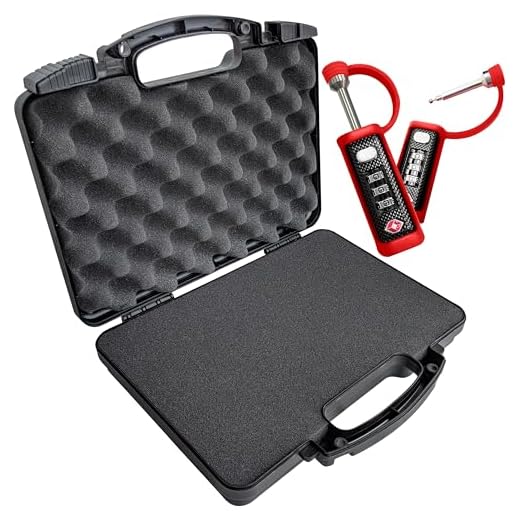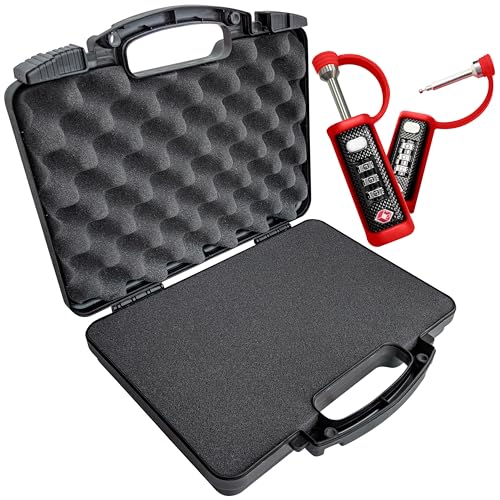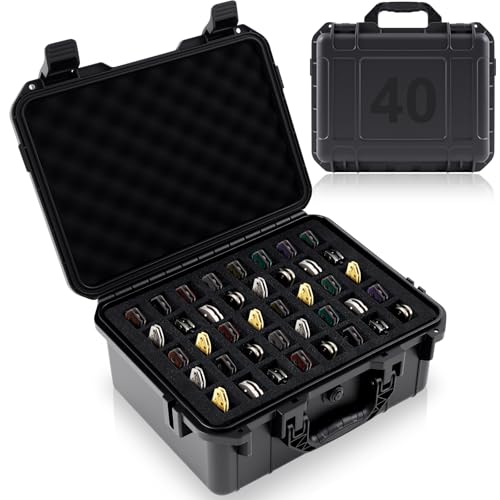






Do not transport a loaded firearm. The correct procedure is to declare the firearm at the airline ticket counter, ensure it is unloaded, secure it inside a locked, hard-sided case, and follow carrier and national documentation requirements before presenting the item for stowage in the aircraft hold.
United States guidance: the Transportation Security Administration requires declaration at the ticket counter, an unloaded firearm, and placement in a locked hard-sided container for carriage in checked baggage. Firearms are prohibited in the cabin. Ammunition must be packed in secure packaging (manufacturer’s boxes or dedicated containers); many carriers impose quantity limits and require separate declaration for rounds.
International travel: verify export and import rules for every country on the itinerary. Several states ban personal transport of firearms or demand advance permits, temporary import certificates, or transfer through licensed freight forwarders. Airlines may refuse carriage without prior approval; confiscation, fines, and criminal charges are common where paperwork is missing or packaging rules are violated.
Practical checklist: arrive at the airport early; present firearm declaration forms to airline staff; lock the firearm in a rigid case (no soft bags); store magazines and loose rounds separately or as the carrier specifies; carry original registration, permits, hunting licenses or written import/export approvals; retain serial-number records and receipts. Failure to declare or to comply with destination rules can lead to arrest and permanent seizure.
Transporting Firearms and Restricted Items in Registered Airline Baggage
Answer: Firearms and certain defensive implements are allowed only in registered airline hold when unloaded, locked in a hard-sided case, declared at the ticket counter, and accompanied by all required licenses and permits.
Action steps at home and at the airport
Contact the carrier and the embassy/consulate of your destination and each transit country at least 72 hours before departure to confirm permission, documentation and any quantity limits for ammunition.
Unload the firearm; remove magazines and store them separately. Verify chamber and action are empty before packing and keep visual proof (photograph) if possible.
Use a rigid, lockable metal or polymer container designed for firearms; TSA and many carriers insist the container be locked and only opened by airport authorities. Retain keys or combinations; some carriers require TSA-style locks.
Declare the item to the airline at the ticket counter when presenting baggage for the aircraft; complete any carrier declaration forms. Failure to declare may lead to seizure, fines, or criminal charges.
Ammunition, permits and prohibited items
Pack ammunition in manufacturer boxes or an approved secure container; follow the carrier’s stated limits and IATA Dangerous Goods Regulations for carriage of small arms cartridges. Loose or improvised packaging is unacceptable.
Carry original ownership documents, export/import permits, hunting permits or a firearm license as required by origin, transit and destination laws. Concealed-carry permits are not a substitute for international gun-import paperwork.
Prohibited for transport in airline hold without special government approvals include explosives, military ordnance, certain automatic firearms, and many chemical irritants. Verify classification with the carrier and relevant authorities before travel.
Arrive earlier than normal to allow time for inspection and processing. When in doubt, delay travel until official written confirmation from the carrier and destination authorities is obtained.
Which airlines and countries permit firearms in the aircraft hold
Recommendation: transport firearms only after obtaining written approval from the carrier and the origin/destination authorities; at minimum the item must be declared at the ticket counter, unloaded, secured in a locked hard‑sided case, and accompanied by all required permits and import/export documentation.
Selected major U.S. carriers – practical requirements
American Airlines, Delta Air Lines, United Airlines, Southwest Airlines, Alaska Airlines and JetBlue accept firearms in the aircraft hold for sporting or hunting purposes when passengers follow carrier rules: declaration at ticket counter, firearm unloaded, locked inside a rigid case, magazines removed or empty, and ammunition separated and packaged per airline instructions. Age restrictions (typically 18+ for rifles/shotguns, 21+ for handguns on some carriers), per‑piece quantity limits and packaging standards for cartridges vary by carrier – always request the carrier’s firearms policy page and confirmation at booking.
Quick checklist for U.S. carriers: written carrier approval, ticket counter declaration, unloaded, locked hard case, magazine and ammunition handling per airline rules, valid ID and any required permits.
Selected international carriers and national rules
Air Canada, Lufthansa, KLM, Air France, British Airways and Qantas permit transportation of firearms in the aircraft hold if international and local laws are met: national export/import permits, firearm certificates, and carrier notification. Carriers require declaration at the airport, locked hard case, and specific ammunition packaging (many insist on original manufacturer packaging or purpose‑built ammo boxes). Several European carriers require advance notification by phone or e‑mail and will ask to see permits before acceptance.
Countries with strict prohibitions or heavy licensing for incoming firearms include Japan, Singapore, Hong Kong and the United Arab Emirates – most prohibit casual carriage and will deny entry without prior government authorization. Countries that regularly permit sporting firearms subject to paperwork include Canada, the UK, Germany, France and Australia, but each has distinct entry documentation, temporary import rules and quarantine or storage requirements; confirm with the embassy and the carrier before travel.
Operational recommendations: obtain written carrier confirmation and government import/export permits before travel; print and carry copies; arrive early and declare at the ticket counter; photograph serial numbers and case locking mechanisms; store ammunition as required by the carrier. For case selection and secure transport options review resources such as best luggage for europe industry statistics and choose a robust hard case or consider a convertible carry solution like best convertible purse backpack for travel items (note: firearms must remain in a dedicated locked case in the hold, not in personal daypacks).
Airport regulatory requirements and documentation for declaring a firearm
Declare any firearm to the carrier and airport security at the ticket counter before placing items into the aircraft hold, and present all required permits and paperwork on arrival.
Required documents (standard baseline): government photo ID (passport for international travel); booking reference; national firearm licence or certificate showing the serial number; proof of ownership/registration; carrier-issued firearm declaration form completed at the counter; written import permit or temporary authorisation for the destination if the country mandates one; hunting permit when transporting for sport; receipts or manufacturer packaging for ammunition when requested.
Additional documents that specific states or routes often require: export authorisation from the national firearms authority; transit-country permits if a stopover passes through jurisdictions with separate import/export controls; end-user certificates or arms-export licences for military-style or commercial transfers; translations of documents into the destination country’s official language when requested by customs.
Timing and pre‑travel actions: contact the airline and the firearms/regulatory authority in the country of departure and arrival at least 72 hours before departure to confirm documentary requirements and any per-passenger ammunition limits. Obtain destination import permits well before travel when those are mandatory (processing can take days to weeks).
At the airport counter present originals and two photocopies of each licence/permit; retain one copy and hand one to the airline or customs officer as requested. If travelling internationally, also upload scanned documents to the airline’s secure portal if offered, and carry digital copies on a separate device as backup.
Packaging and declaration specifics that carriers and security will verify: unloaded condition; locked, hard-sided container with only the passenger retaining the key or combination; clear listing of serial numbers on the airline declaration form; separate, properly packaged ammunition declared according to carrier and IATA Dangerous Goods rules. Ask the carrier about any per-passenger limits for rounds and packaging requirements before travel.
Consequences of non-compliance: refusal of carriage, confiscation, civil penalties and possible criminal charges in some jurisdictions. If a permit is denied or missing, do not attempt transport; request carrier guidance on export or temporary storage options and obtain written confirmation.
Final checklist to present at the counter: passport and booking reference; original firearm licence; import/export or temporary permit for destination; carrier firearm declaration form completed; proof of ownership/serial number copy; ammunition packaging proof (if applicable); extra photocopies and a digital backup.
Permitted arms types and specific item restrictions
Only unloaded firearms and properly packaged ammunition in locked, hard-sided containers are permitted in the aircraft hold; all other offensive devices are frequently refused.
Firearms, replica and antique arms
- Firearms: must be unloaded, action open or bolt removed where possible, magazines and detachable feeding devices removed and carried separately.
- Case requirements: rigid, lockable case (key or combination), only the passenger retains the key or combination; soft cases are usually unacceptable.
- Trigger/security devices: use a commercial trigger lock or cable lock in addition to a locked case where available.
- Replica and deactivated arms: airline and national authorities often treat these as firearms unless certified inert; carry documentation proving deactivation and verify acceptance in advance.
- Antique firearms: treated variably by carriers and customs – require paperwork proving age and non-operability in some jurisdictions.
Ammunition, explosive rounds and related restrictions
- Allowed ammunition: small arms cartridges packed in original manufacturer boxes or in sturdy, non-metallic or metal ammunition boxes; must be separate from the firearm.
- Quantity limit: most carriers follow the 5 kg (11 lb) net per passenger guideline for small arms ammunition in the hold; verify the carrier limit before travel.
- Prohibited ammunition types: explosive, incendiary, tracer, armor‑piercing and other specialized military rounds are forbidden.
- Unstable or home-loaded rounds: unacceptable unless approved by the carrier and supported by a recognized manufacturer’s documentation.
- Airguns and pellet rifles: often classified as firearms for transport purposes–treat them the same as firearms unless the airline specifies otherwise.
- Stun devices and electroshock instruments: many carriers prohibit these entirely; where allowed they may require removal of batteries and specific packaging or total prohibition of spare batteries in the hold.
- Self-defense sprays and chemical agents: typically not permitted; any aerosol containing incapacitating agents is commonly banned by airlines and many states.
- Sharp instruments and edged tools: folding knives, multi-tools and non‑locking blades are usually acceptable in the hold, but switchblades, gravity knives, butterfly knives and fixed combat blades are frequently prohibited by national law or carrier policy – verify before travel.
- Lithium batteries: spare lithium-ion and lithium metal batteries are forbidden in the hold; installed batteries in compliant devices may be allowed but follow watt-hour and terminal-protection rules (≤100 Wh normally allowed in cabin; 100–160 Wh requires airline approval).
Quick checklist:
- Unload firearm and remove magazines; secure with trigger lock.
- Place firearm in a locked, hard-sided case; store ammunition separately in original packaging not exceeding 5 kg net unless the carrier specifies otherwise.
- Keep all battery spares in the cabin and protect terminals; remove batteries from devices if the airline requires.
- Carry documentation for antique, deactivated or replica items and verify carrier plus national rules before departure; declare items at the airline ticket counter as required.
Legal risks, penalties, and how to verify compliance before travel
Obtain written airline approval plus all destination and transit-country permits before storing firearms or other controlled arms in the aircraft hold compartment.
Possible enforcement outcomes: civil fines, immediate seizure of the item, refusal to board, arrest and criminal prosecution, temporary detention at the airport, confiscation without refund, revocation of aviation or firearms privileges, and long-term travel restrictions or criminal record. Airlines may charge administrative penalties and place the traveller on a no-fly list; customs authorities can assess forfeiture and additional monetary penalties under national law.
Jurisdictional examples: United States – carriers require declaration at check-in, unloaded and secured in a locked hard-sided container; failure to declare risks TSA civil penalties, seizure and state or federal charges; consult TSA and U.S. Customs and Border Protection for specifics. European Union – member states enforce national arms laws plus Schengen/third-country import rules; temporary import usually requires an EU Firearms Pass or national permit and advance customs clearance. United Kingdom – possession without the correct licence can trigger criminal prosecution and seizure. Canada and Australia require import permits and strict transport rules; Gulf states, Singapore and Japan maintain zero-tolerance policies with immediate arrest for non-compliance. Always verify the exact statute or regulation for each country on official government sites before travel.
Pre-travel verification checklist: 1) Download and save the airline’s official policy page and request email confirmation referencing your booking number; 2) Confirm acceptance for every flight segment, including codeshares and connections; 3) Check departure, transit and destination government portals for firearms/arms import, temporary admission, and ammunition limits; 4) Contact the destination embassy or consulate for customs processing and permit forms; 5) Obtain written import/export permits, temporary admission certificates, or hunting/export licences required by the destination and any transit states; 6) Prepare a documentation packet: licences, permits, registration, invoice, serial numbers, and airline confirmation; 7) Pack to specification (unloaded, locked hard case, secured locks, ammunition packaged as allowed) and photograph serial numbers and packaging before travel; 8) Present the documentation at airline check-in counter and retain a stamped copy of any declaration or acceptance.
If approval is absent or uncertain, do not attempt to travel with the item: instead arrange licensed freight forwarding or export shipment under customs bond, or remove the item from travel plans. For industrial or non-firearm equipment requiring special packaging and documentation, consult technical packing guides such as how to design a scrubber and obtain carrier written acceptance prior to transport.







